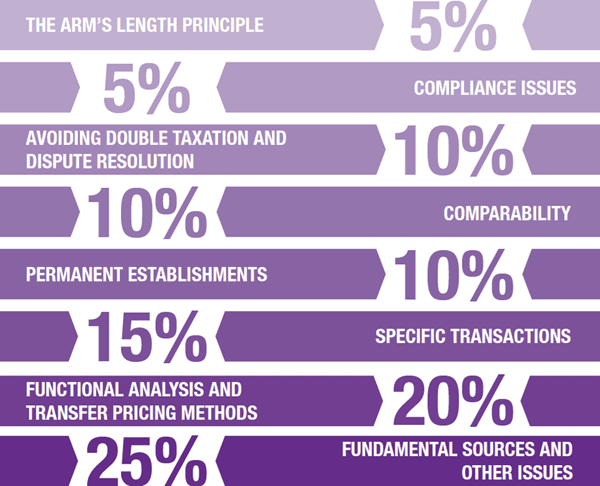Useful links
Useful links
Transfer Pricing option module
This module gives you the required knowledge, skills and understanding of the fundamentals of transfer pricing, based on the OECD and UN models, that you need to succeed in your career. You will gain detailed knowledge of functional analysis, the arm’s length principle, comparability, compliance issues, dispute resolution and avoiding double taxation.
Who is it for?
The Transfer Pricing option module is aimed at professionals around the world, particularly to tax advisers, professionals working with multinational corporations and in-house tax practitioners at large corporate firms. ADIT is suitable for senior level professionals, managers or those working towards a senior level.
What does it cover?

The exam consists of three parts. Part A consists of two mandatory questions worth 25 marks each. Part B consists of two questions worth 20 marks each, of which candidates are required to answer one. Part C consists of five questions (this will reduce to three questions in the 2026 exams) worth 15 marks each, of which candidates are required to answer any two.
Please note: ahead of the 2026 exams, the number of questions available in Part C will be reduced from five to three. Parts A and B will remain unchanged from previous years' exams, with two questions in each Part.
- Exam length: 3hrs 15mins
- Available in June and December
How it will benefit you
- Gain a robust understanding of theory coupled with practical application
- Build your confidence, skills and competencies to apply principles in your daily work
- Keep up with fast-changing developments in tax law, and stay ahead in your field
- Increase your employability with a qualification recognised around the world
Length of study
Approximately 200 hours of learning time is recommended to complete the Transfer Pricing option module. This may vary dependent on a number of factors including your background, knowledge and experience, and your study method.
How is it assessed?
- One exam consisting of three parts
- Questions designed to test your application of concepts to real world scenarios
- Employer-driven syllabus, with a professional focus
